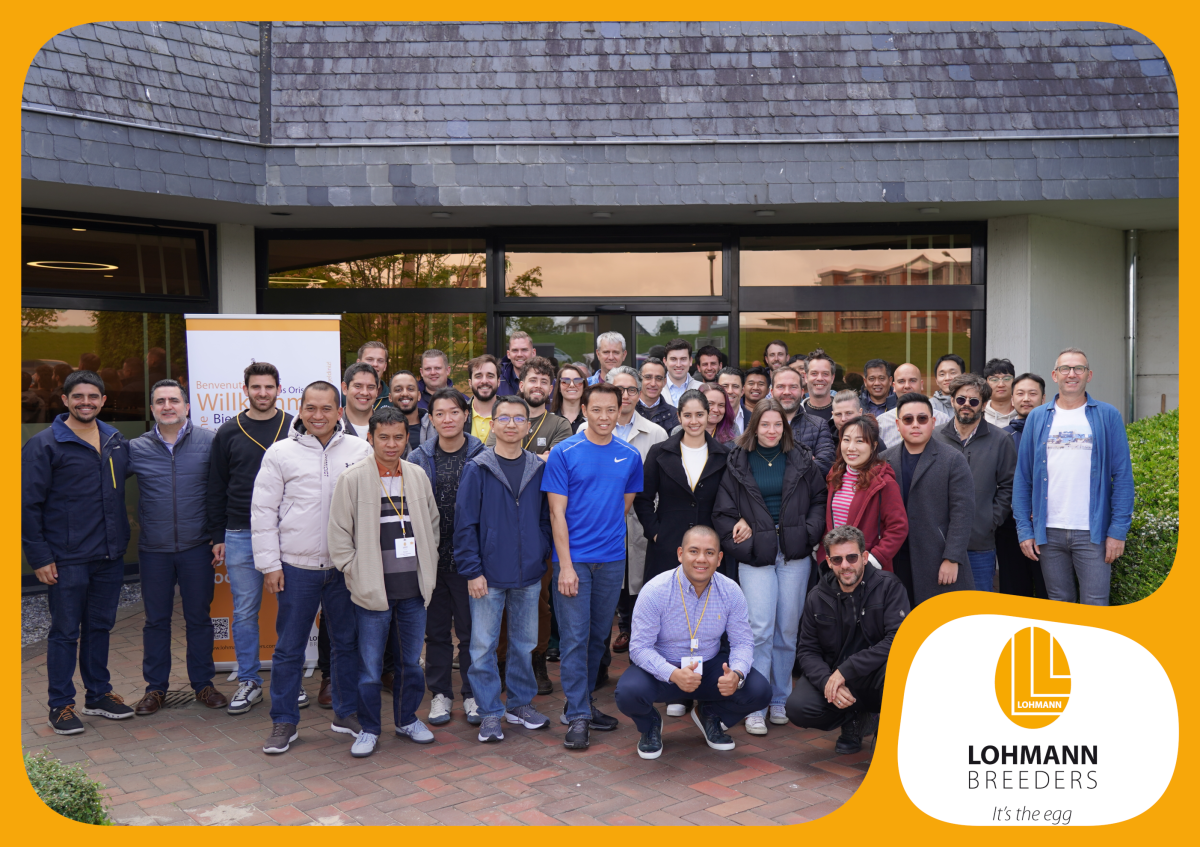Summary
Airborne moulds and endotoxins as well as inhalable dusts were monthly measured during the course
of one year using impingement (AGI 30) and filtration-elution-method in four different housing systems:
a floor keeping system, a usual aviary, a floor keeping system with outdoor-access (free range) and
the german ‘Kleingruppenhaltung’ (a small group system). Highest concentrations of endotoxins were
regularly found in the floor keeping system (about 4000 EU/m³), followed by the aviary, free range
and ‘Kleingruppenhaltung’ (about 1000 EU/m³). The concentrations of inhalable dusts ranged from
below 1mg/m³ to 9 mg/m³ with the highest levels in the systems with integrated litter space. The
impact of the housing type on the concentration of airborne moulds seems lower than the seasonal
influence. The results indicate an urgent need for improving the work environment of farm workers
e.g. by breathing masks in order to prevent negative health effects.

Introduction
Airborne particles like mould spores, dust and endotoxins in and from the animal husbandry are associated with a multiplicity of health effects on the human and animal organism. Comparatively high concentrations can be found in the poultry keeping units, especially in broiler barns [5, 4]. With the move to alternative housing systems for laying hens in the EU (1999/74/EC), in order to improve animal welfare, new systems have been introduced which allow the birds more free movement than in the former battery cages. However, little is known about the air pollution in these systems and the possible health effects on the people working in these atmospheres. For this reason a study, funded by the German Ministry of Food, Agriculture and Consumer Protection (BMELV) through the German Federal Agency for Agriculture and Food (BLE), was carried out in four different alternative keeping systems for laying hens to learn more about the concentrations of airborne bacteria in these environments.Materials and Methods
The collection of mould spores was conducted by impingement (All-Glass-Impinger type AGI 30). This method is known to show the highest yield of micro-organisms in stables under regular conditions [2, 1]. For each measurement there were six samples collected in three turns with two impingers running parallel. The impingers were charged with phosphate buffer (after Soerensen) to avoid a change in pH-value due to a drag-in of ammonia. Collecting of air samples took place in 150 cm height in the centre of the barn and middle of the daily maintenance patrol. During sampling impingers were kept in temperated and isolated aluminium tubes to allow for constant sampling conditions over the year. After sampling the impingers were stored and transported to the laboratory at 4’ C. Estimation of airborne moulds was done by aerobic plate count method (APC) on DG18-Agar (Oxoid, Wesel, Germany). Colony forming units (CFU) were counted after incubation at 25’ C and 36’ C for 72 hours. Dust was collected on glass fibre filter in I.O.M. filter heads on SKC-pumps with an airflow of 2.5 l/min. The amount of airborne total inhalable dust was estimated by calculating the weight gain of the filter. After weighing the glass fibre filter were further processed to assess the concentrations of airborne endotoxins by LAL-Test (Kinetic QCL, BioWhittaker, East Rutherford, USA).In the early 1990s, a multi-trait record system was developed by Extension personnel of the University of California to economically evaluate flocks, programs and products. The system was field-tested on a dozen commercial farms with several hundred large flocks totaling approximately 28 million White Leghorn laying hens. Cooperating farms provided us with detailed lifetime records representing weekly performance. These records were then analyzed and reports were provided back to each cooperator.
Results and Discussion
Figure 1 shows the concentration of airborne moulds during the course of the year. There is a clear seasonal course with highest concentrations in the late summer and autumn month for all investigated housing systems. Mould spore concentrations in ambient air show a similar course during the year [3], indicating that introduced moulds from outside have a great effect on the burden of airborne mould spores in the air of the housing systems. The highest concentrations of mould spores can be found for the floor keeping system with outdoor access presumably due to a higher exchange with the ambient air and dragged-in mould-bearing floor coverings. Lowest values were found for the german ‘Kleingruppenhaltung’. This is the same for the airborne inhalable dust (figure 2). Whereas the values of dust concentrations exceed the threshold limit value of 4 mg/m³ (MAC, maximum allowable concentration) in the air of the aviary and the floor keeping system regularly – especially in the winter months when air exchange is lowered to reduce heat losses -, the dust concentrations in the air of the ‘Kleingruppenhaltung’ do not exceed 2 mg/m³.Figure 1: The mean concentrations (n=18) of airborne moulds in the air of four different
housing systems for laying hens during the course of one year

Ventilation dependent concentrations can also be found for the airborne endotoxins (figure 3). Again the highest values can be found for the floor keeping system, followed by the floor keeping system with outdoor access and the aviary. Lowest concentrations of airborne endotoxins among the four housing systems for laying hens were detected in the ‘Kleingruppenhaltung’. In contrast to the three other housing systems the concentrations of endotoxins in the air of ‘Kleingruppenhaltung’ show an adverse seasonal course with slightly higher values in the ‘warm’ (summer) month whereas aviary, floor keeping system and floor keeping system with outdoor access have a higher burden of airborne endotoxins in the ‘cold’ (winter) month. This is again – as for inhalable dusts – presumably due to a reduced ventilation in cold weather.
Figure 2: The mean concentrations (n=3) of airborne inhalable dust in the air of four different
housing systems for laying hens during the course of one year

Figure 3: The mean concentrations (n=3) of airborne endotoxins (EU= Endotoxin Units) in
four different housing systems for laying hens during the course of one year

Conclusions
Endotoxin respectively dust concentrations in the air of alternative housing systems for laying hens exceed the natural concentrations in ambient air by a factor of up to 100 respectively 10. There is a strong influence of housing type and season on endotoxin and dust particle counts. The results indicate an urgent need to protect the respiratory health of farm workers also in alternative laying hen houses e.g. by breathing masks in order to prevent negative health effects.References
[1] Jensen, P.A., Todd, W.F., Davis, G.N., Scarpino, P.V. (1992): Evaluation of eight bioaerosol samplers challenged with aerosols of free bacteria. Am. Ind. Hyg. Assoc. J. 53: 660-667[2] Pahl, O., Phillips, V.R., Lacey, J., Hartung, J., Wathes, C.M. (1997): Comparison of commonly used samplers with a novel bioaerosol sampler with automatic plate exchange. J. Aersosol Sci. 28: 427-435
[3] Pastuszka, J.S., Kyaw Tha Paw, U., Lis, D.O., Wlazlo, A. and Ulfig, K. (2000): Bacterial and fungal aerosol in indoor environment in Upper Silesia, Poland. Atmospheric Environment 34, 3833–3842.
[4] Rylander R. and Fernanda Carvalheiro M. (2006): Airways inflammation among workers in poultry houses. Int Arch Occup Environ Health, 79: 487–490
[5] Seedorf, J. and Hartung, J. (2002): Stäube und Mikroorganismen in der Tierhaltung. KTBL-Schrift 333, Landwirtschaftsverlag GmbH, Münster
Zusammenfassung
Schimmelpilzsporen, Staub und Endotoxine in der Luft von vier alternativen Haltungsformen für LegehennenInstitut für Tierhygiene, Tierschutz und Nutztierethologie, Stiftung Tierärztliche Hochschule Hannover Die Konzentrationen luftgetragener Schimmelpilzsporen und Endotoxine sowie der Gehalt an einatembarem Staub wurden monatlich im Verlauf eines Jahres mit Impingement (AGI30) und Filtration (IOMSammelköpfe mit Glasfaserfilter) im wöchentlichen Wechsel in vier verschiedenen Legehennenhaltungen erhoben: ein Bodenhaltungssystem mit zentraler Kotgrube, eine Volierenhaltung mit mehreren Ebenen und Kotband, eine Freilandhaltung mit Kotgrube und Kaltscharrraum und eine Kleingruppenhaltung. Die höchsten Konzentrationen an Endotoxinen konnten regelmäßig in der Bodenhaltung (durchschnittlich etwa 4000 EU/m³) gefunden werden, gefolgt von der Volieren-, der Freiland- und der Kleingruppenhaltung. (etwa 1000 EU/m³). Die Staubkonzentrationen variierten zwischen unter 1 mg/m³ und bis zu 9 mg/m³ mit den höchsten Werten in den beiden Systemen mit innenliegendem Scharrraum. Der Einfluss der Haltungsform auf die Konzentrationen luftgetragener Schimmelpilze ist weniger stark ausgeprägt als der Einfluss der Jahreszeit. Zur Vorbeugung von Atemwegserkrankungen und anderer negativer Effekte auf die Gesundheit der Arbeiter sollte der Arbeitsschutz an diesen Arbeitsplätzen durch geeignete Maßnahmen wie zum Beispiel das konsequente Tragen von Atemschutz verbessert werden.
S'abonner à notre lettre d'information
Et découvrez toutes les dernières nouvelles du secteur.







